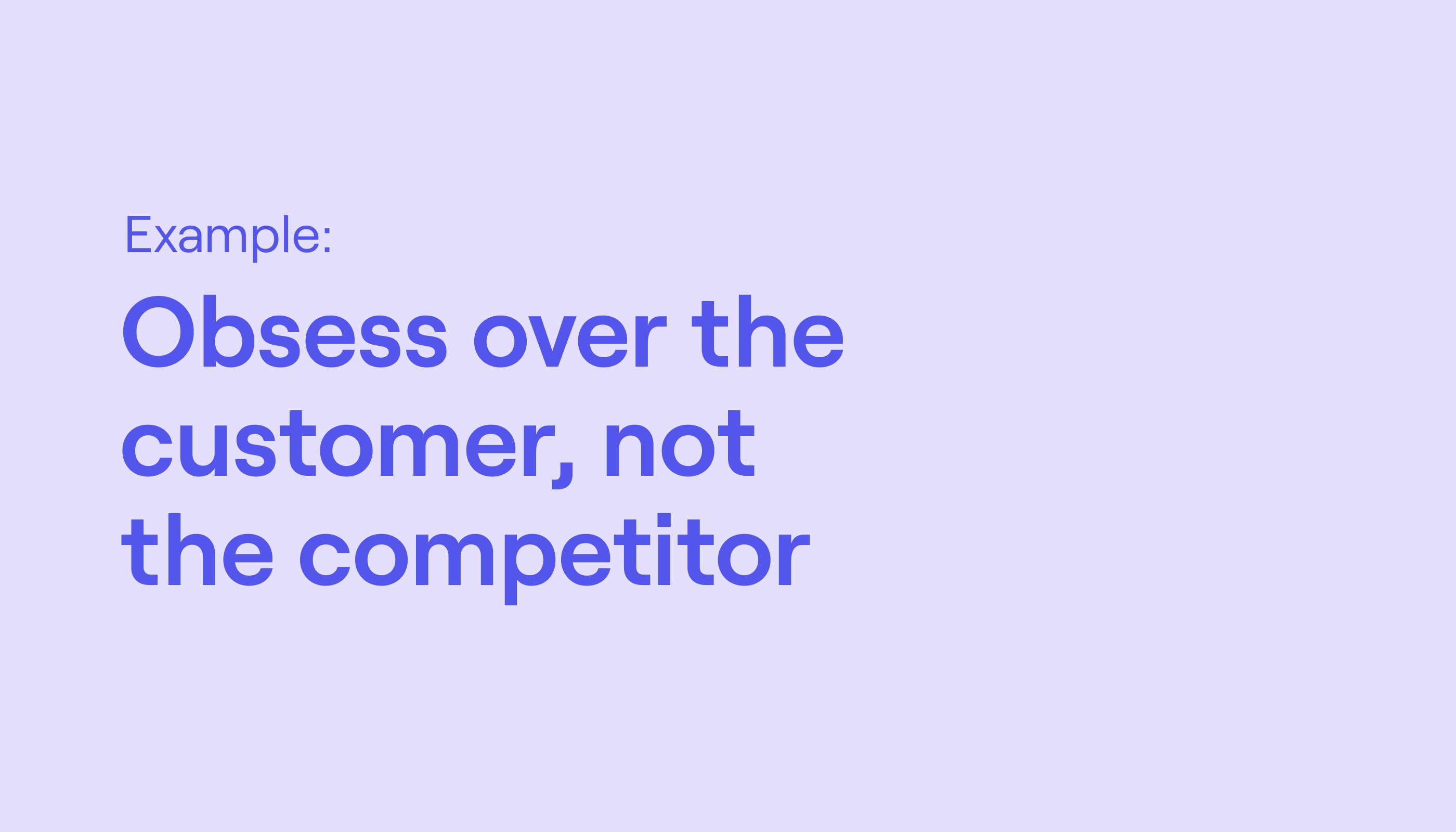How product principles drive better decision making
As product organisations scale, maintaining quality and alignment becomes ever more challenging. More functions, teams, and people bring new ideas, lines of communication, and priorities. This often leads to conflict, slow decision-making, waste and ultimately, poor products. But it doesn't have to be this way. By codifying what success looks like into a set of simple product principles, you can help keep everyone on track, ensure that your product is aligned with your organisation's goals and values, and keep delivering quality products.
This article provides an overview of what product principles are, why they’re different from engineering and design principles, how they can help your organisation, what makes a good product principle, some relevant examples, and importantly, how to create your own.
What are product principles?
So what are they? Product principles are a set of guiding statements that are used to inform the design and development of a product. A product principle is not a goal in and of itself. It is an ever-present beacon that guides decision-making, but it is not something that can be "reached" or completed. They are usually expressed as a set of 3-8 principle statements that provide a clear and concise guide for decision-making during the product development process. Product principles are an important asset of a solid product strategy, providing a core component of a decision-making framework.
Some organisations create product, engineering, and design principles to guide different aspects of the product development process. Product principles focus on the overall goals and values of the product, engineering principles focus on the technical implementation of the product, and design principles focus on the visual and aesthetic aspects of the product. These three types of principles often work together to ensure that the final product is well-designed, effective, and successful.

Why should you use product principles?
Using product principles can provide a raft of benefits for the design and development of a product. One of the key benefits of using product principles is that they can help facilitate faster and more aligned decision-making. By providing clear and concise guidance, product principles reduce ambiguity and ensure that decisions are made quickly and consistently across an organisation.
Product principles can also promote consistency, not only in the way that products get developed, but importantly, in the end-user experience. By providing a clear and consistent set of guiding ideas or rules, product principles can help ensure that the final product is cohesive and consistent, which can improve its quality and appeal to customers.
Finally, product principles can help differentiate your product from competitors. By codifying what makes your product unique and valuable, product principles can help ensure that your product stands out in a crowded marketplace.
What makes a good product principle?
A good product principle should be easily understandable and actionable, providing a clear guide for decision-making. They should be easy to remember and aligned with the wider product or organisation strategy. They don't need to be original, as long as the team believes in them and they inspire the team to create better outcomes. A good product principle should be emotionally resonant, connecting with the team and motivating them to do their best work. Overall, a good product principle should provide a clear and concise guide for decision-making, aligning with the goals and values of the product and the wider organisation.

Examples of product principles
Here are some of our favourite product principles that we’ve come across.
Hotjar
- Goals, goals, goals.
- Emotionally connected.
- The sum is greater than its parts.
- Intuitive at its core.
- Think big, start small.
Pay.com
- We are not a bank. We disrupt banking.
- A sense of security and privacy is key.
- Merchants are the gateways to our customers, so our products must “wow” the merchant.
Slack
- Don't make me think.
- Be a great host.
- Prototype the path.
- Don't reinvent the wheel.
- Make bigger, bolder bets.
Gusto
- Show users how much we love them.
- Be opinionated. Build the future you strongly believe in.
- Only do things that are worth doing really, really well.
- We are sherpas. Make sure the team gets to where they want to go.
- Listen. Great ideas can come from anywhere.
How to create product principles
The creation of product principles should be led by the most senior product person in the organisation. In startups this might be the founder, or product manager, in larger more mature organisations this might be the VP of Product or CPO. However, it is often beneficial to involve all levels of the organisation in the design process to ensure that the product principles align with the overall goals and objectives of the company, and that they are relevant and practical for all teams and departments. By involving all layers of the organisation in the creation process, the prodhuct principles can be more effective and impactful. Additionally, it helps to foster a culture of collaboration and inclusion within the company.
It is often best to create product principles early in the product development process, however, it is possible to define them later down the line, with an acknowledgement that some remediation work may need to take place to adhere to them.
We’ve often found a collaborative workshop to be an efficient and inclusive vehicle for defining product principles. Here is a template, 90 minute workshop agenda:
- Facilitator: Introduce the concept of product principles - benefits, examples etc. (15 mins)
- Facilitator: Present any pre-existing company or product strategy artefacts e.g. Vision, mission, goals, positioning, go-to-market (15 mins)
- Individuals or pairs: Create as many product principles as possible (20 mins)
- Team: Discuss, review, and sort generated ideas - removing duplicates, combining related principles, and aligning them with any product or organisation strategy artefacts (40 mins)
- Individuals: Dot vote on the strongest candidates (15 mins)
- Facilitator: Summarise and outline next steps (15 mins)
Using the outputs of the workshop, the individual responsible for owning the product principles can refine them, before presenting them back to the wider organisation.
It’s important to dedicate some time and planning to ensure they are visible, engaging, and accessible to everyone in the organisation. We’ve seen some teams create posters, vinyl stickers, desktop backgrounds, wall decals, and web pages to help keep the principles front-of-mind.

Summary
Product principles are a valuable tool for guiding product development, especially in growing organisations. They can help facilitate faster and more aligned decision-making, promote consistency, and differentiate a product from its competitors. A good product principle should be clear and actionable, easily memorable, and aligned with the goals and values of the product and the wider organisation. By creating and using product principles, organisations can help ensure that their products are well-designed, effective, and successful. As product organisations scale, maintaining quality and alignment becomes ever more challenging. More functions, teams, and people bring new ideas, lines of communication, and priorities. This often leads to conflict, slow decision-making, waste and ultimately, poor products. But it doesn't have to be this way. By codifying what success looks like into a set of simple product principles, you can help keep everyone on track, ensure that your product is aligned with your organisation's goals and values, and keep delivering quality products.

